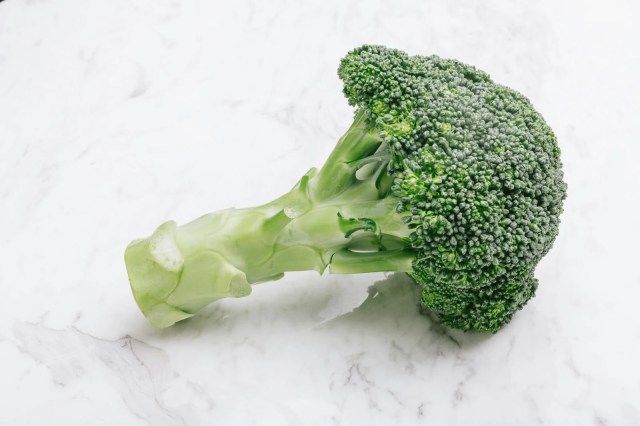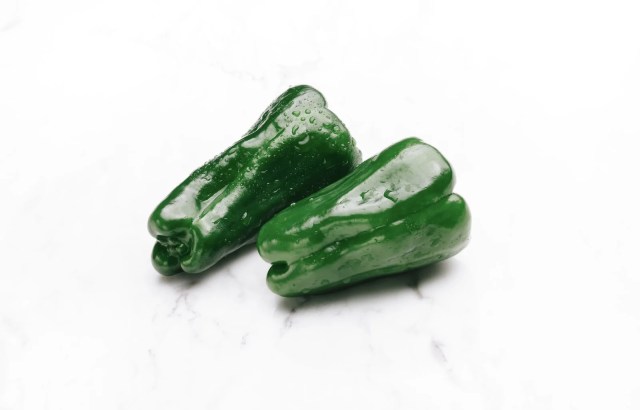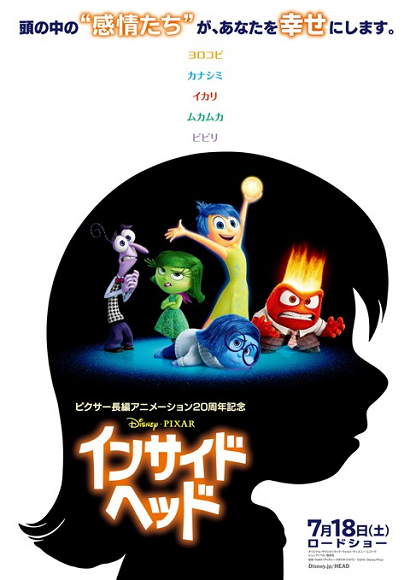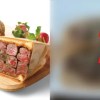If you’re an anime purist, you’ve probably watched at least one title with a localization choice that rubbed you the wrong way. Maybe you were irked by Sailor Moon’s Usagi being called “meatball head” on American T.V. instead of “dango/dumpling head.” More recently, you might have wondered why Doraemon’s central family ditched all their chopsticks and now eat their Japanese food with forks in their U.S. appearances.
But localization runs in the other direction, too, and it’s just come to light that Pixar has altered part of the artwork in several scenes of Inside Out solely for the film’s Japanese release.
Let’s try a little experiment. What comes to mind when you hear the word “rice omelet?” Before coming to Japan, I would have thought, “That sounds like about the cheapest, least satisfying meal you could make, and is surely something only eaten by the poorest or laziest college students.” In Japan, though, rice omelets (which are actually made from more than just rice and eggs) are a favorite of kids across the country, and often bring up happy memories of Mom’s delicious home-cooking. Ditto for curry, which for many in Japan is as evocative of their childhood home as it is of India.
In other words, culinary connotations differ between nations, and so Disney and Pixar were a little worried about all the scenes in Inside Out where its protagonist, 11-year-old Riley, is faced with the difficult challenge of having to eat a plate of broccoli. To just about any American moviegoer, “broccoli” is effective shorthand for “vegetable widely hated by kids,” but in Japan, the healthy foodstuff doesn’t really have that same image.
▼ ”What’s the big deal?” – Japan
It’s not that Japanese kids are all about eating their vegetables, but rather that broccoli isn’t nearly as prevalent in home-made meals as it is in the U.S., and so it’s not a symbol of being pressured by your parents and having only limited control over your own life. So in order to get the same, instantly recognizable frame of reference for Japanese audiences, Inside Out’s producers looked into what Japanese kids do hate being served by their parents, and what they found was…
▼ ”Uhh, can we have that broccoli back?”
…green peppers, called piman in Japanese.
Pixar could have just switched every mention of “broccoli” in the dialogue to “piman” and called it a day, but instead, the studio went back and changed all images of the former to the latter. This was no minor task, given the number of scenes in which broccoli can be seen in the original version. Still, producers felt it was the right thing to do, and a Disney rep says the decision was made in order to help Japanese audiences better relate to and enjoy the film.
Like many films with kids in their target market, Inside Out is being theatrically released in Japan in both Japanese-dubbed and subtitled formats. The change from broccoli to peppers is only present in the dubbed version, which also contains altered signs, newspapers, and other bits of text where Japanese replaces English. The subtitled version’s visuals, meanwhile, are identical to the original version.
If you’re the suspicious type, you could argue that the discrepancies between the two versions are a savvy ploy designed to get fans to watch the movie twice, and thus buy two tickets, in order to get the complete experience. The switch to peppers does make sense from a storytelling standpoint, though, and even as it brushes aside a chance for Japanese audiences to learn a little bit about other cultures, it’s not hard to see why Inside Out’s producers went the way they did.
Now, if someone could explain whose idea it was to change the movie’s title to Inside Head in Japan…
Source: Cinema Today
Top image: Disney (edited by RocketNews24)
Insert images: Pakutaso (1, 2), Disney (edited by RocketNews24)




 The new seasonal menu at family restaurant chain Jonathan’s is curiously simple…
The new seasonal menu at family restaurant chain Jonathan’s is curiously simple… Ghibli Easter eggs are good, but Pixar Easter eggs are even better【Video】
Ghibli Easter eggs are good, but Pixar Easter eggs are even better【Video】 Freaky veggies trending in Japanese groceries, possible precursor to real-life “The Last of Us”
Freaky veggies trending in Japanese groceries, possible precursor to real-life “The Last of Us” Study shows broccoli sprouts may regrow hair, and not just on Chia Heads
Study shows broccoli sprouts may regrow hair, and not just on Chia Heads Personified emotions from Pixar’s “Inside Out” get nifty kanji makeover in Japanese posters!
Personified emotions from Pixar’s “Inside Out” get nifty kanji makeover in Japanese posters! McDonald’s new Happy Meals offer up cute and practical Sanrio lifestyle goods
McDonald’s new Happy Meals offer up cute and practical Sanrio lifestyle goods More foreign tourists than ever before in history visited Japan last month
More foreign tourists than ever before in history visited Japan last month Is the new Shinkansen Train Desk ticket worth it?
Is the new Shinkansen Train Desk ticket worth it? Starbucks reopens at Shibuya Scramble Crossing with new look and design concept
Starbucks reopens at Shibuya Scramble Crossing with new look and design concept Our reporter takes her 71-year-old mother to a visual kei concert for the first time
Our reporter takes her 71-year-old mother to a visual kei concert for the first time All-you-can-drink Starbucks and amazing views part of Tokyo’s new 170 meter-high sky lounge
All-you-can-drink Starbucks and amazing views part of Tokyo’s new 170 meter-high sky lounge The oldest tunnel in Japan is believed to be haunted, and strange things happen when we go there
The oldest tunnel in Japan is believed to be haunted, and strange things happen when we go there Beautiful Sailor Moon manhole cover coasters being given out for free by Tokyo tourist center
Beautiful Sailor Moon manhole cover coasters being given out for free by Tokyo tourist center Is Japan’s massive Shizuoka steak sandwich really as delicious as it looks in promo photos?
Is Japan’s massive Shizuoka steak sandwich really as delicious as it looks in promo photos? Add a little green to your life: Green moss terrariums are the new Zen gardens
Add a little green to your life: Green moss terrariums are the new Zen gardens Disney princesses get official manga makeovers for Manga Princess Cafe opening in Tokyo
Disney princesses get official manga makeovers for Manga Princess Cafe opening in Tokyo We try out “Chan Ramen”, an underground type of ramen popular in the ramen community
We try out “Chan Ramen”, an underground type of ramen popular in the ramen community Beautiful new Final Fantasy T-shirt collection on the way from Uniqlo【Photos】
Beautiful new Final Fantasy T-shirt collection on the way from Uniqlo【Photos】 Foreign English teachers in Japan pick their favorite Japanese-language phrases【Survey】
Foreign English teachers in Japan pick their favorite Japanese-language phrases【Survey】 There’s a park inside Japan where you can also see Japan inside the park
There’s a park inside Japan where you can also see Japan inside the park Japanese convenience store packs a whole bento into an onigiri rice ball
Japanese convenience store packs a whole bento into an onigiri rice ball Studio Ghibli releases Kiki’s Delivery Service chocolate cake pouches in Japan
Studio Ghibli releases Kiki’s Delivery Service chocolate cake pouches in Japan Japan’s bone-breaking and record-breaking roller coaster is permanently shutting down
Japan’s bone-breaking and record-breaking roller coaster is permanently shutting down New definition of “Japanese whiskey” goes into effect to prevent fakes from fooling overseas buyers
New definition of “Japanese whiskey” goes into effect to prevent fakes from fooling overseas buyers Foreign passenger shoves conductor on one of the last full runs for Japan’s Thunderbird train
Foreign passenger shoves conductor on one of the last full runs for Japan’s Thunderbird train Our Japanese reporter visits Costco in the U.S., finds super American and very Japanese things
Our Japanese reporter visits Costco in the U.S., finds super American and very Japanese things Kyoto bans tourists from geisha alleys in Gion, with fines for those who don’t follow rules
Kyoto bans tourists from geisha alleys in Gion, with fines for those who don’t follow rules Studio Ghibli unveils Mother’s Day gift set that captures the love in My Neighbour Totoro
Studio Ghibli unveils Mother’s Day gift set that captures the love in My Neighbour Totoro Domino’s Japan now sells…pizza ears?
Domino’s Japan now sells…pizza ears? New Japanese KitKat flavour stars Sanrio characters, including Hello Kitty
New Japanese KitKat flavour stars Sanrio characters, including Hello Kitty Sales of Japan’s most convenient train ticket/shopping payment cards suspended indefinitely
Sales of Japan’s most convenient train ticket/shopping payment cards suspended indefinitely Sold-out Studio Ghibli desktop humidifiers are back so Totoro can help you through the dry season
Sold-out Studio Ghibli desktop humidifiers are back so Totoro can help you through the dry season Japanese government to make first change to romanization spelling rules since the 1950s
Japanese government to make first change to romanization spelling rules since the 1950s Ghibli founders Toshio Suzuki and Hayao Miyazaki contribute to Japanese whisky Totoro label design
Ghibli founders Toshio Suzuki and Hayao Miyazaki contribute to Japanese whisky Totoro label design Doraemon found buried at sea as scene from 1993 anime becomes real life【Photos】
Doraemon found buried at sea as scene from 1993 anime becomes real life【Photos】 Tokyo’s most famous Starbucks is closed
Tokyo’s most famous Starbucks is closed One Piece characters’ nationalities revealed, but fans have mixed opinions
One Piece characters’ nationalities revealed, but fans have mixed opinions We asked a Uniqlo employee what four things we should buy and their suggestions didn’t disappoint
We asked a Uniqlo employee what four things we should buy and their suggestions didn’t disappoint Princesses, fruits, and blacksmiths: Study reveals the 30 most unusual family names in Japan
Princesses, fruits, and blacksmiths: Study reveals the 30 most unusual family names in Japan Studio Ghibli’s new desktop Howl’s Moving Castle will take your stationery on an adventure
Studio Ghibli’s new desktop Howl’s Moving Castle will take your stationery on an adventure Make your own Castle in the Sky, have an excuse to play with your food with this simple trick
Make your own Castle in the Sky, have an excuse to play with your food with this simple trick Pixar character pastries from Ginza Cozy Corner are just as awesome as the films themselves
Pixar character pastries from Ginza Cozy Corner are just as awesome as the films themselves Broccoli and chocolate? We try vegetables in chocolate fondue to test Japanese company’s claims
Broccoli and chocolate? We try vegetables in chocolate fondue to test Japanese company’s claims The broccoli wedding bouquet toss-Japan’s quirky substitute for the garter belt
The broccoli wedding bouquet toss-Japan’s quirky substitute for the garter belt Tokyo holds event where you can ride a Ferris wheel with the hunk of your dreams
Tokyo holds event where you can ride a Ferris wheel with the hunk of your dreams A piece of Japanese business manners that many Japanese people could do without
A piece of Japanese business manners that many Japanese people could do without Ghibli’s The Boy and the Heron won a Golden Globe. Now can it win an Oscar?
Ghibli’s The Boy and the Heron won a Golden Globe. Now can it win an Oscar? Disney Shinkansen coming to Japan’s rails, starts service this month
Disney Shinkansen coming to Japan’s rails, starts service this month Pokémon McFlurry coming to McDonald’s Japan for a limited time
Pokémon McFlurry coming to McDonald’s Japan for a limited time Disney’s 2022 New Year goods are too adorable not too buy them all
Disney’s 2022 New Year goods are too adorable not too buy them all Customer receives special treat with his package: edible packing!
Customer receives special treat with his package: edible packing! 【Breaking】This hamster kind of sucks at eating broccoli
【Breaking】This hamster kind of sucks at eating broccoli New Year’s range of Disney sweets feature characters drawn in traditional Japanese sumi-e ink art
New Year’s range of Disney sweets feature characters drawn in traditional Japanese sumi-e ink art Facial correction app makes the world’s money funny
Facial correction app makes the world’s money funny Kewpie Mayo Cafe celebrates Mayonnaise Day with a month of mayo-hem, special menu
Kewpie Mayo Cafe celebrates Mayonnaise Day with a month of mayo-hem, special menu
Leave a Reply